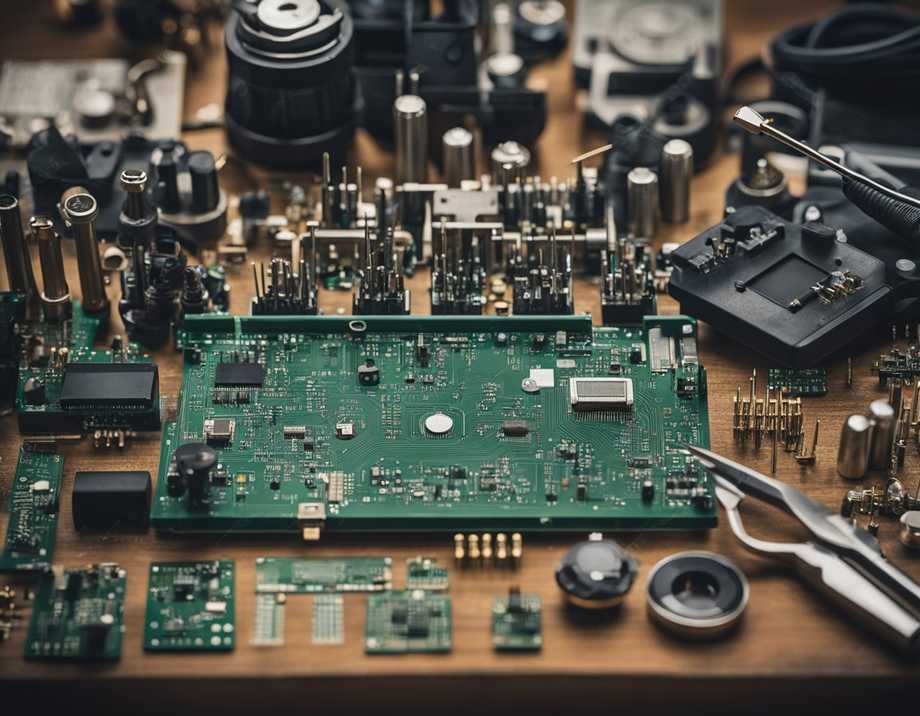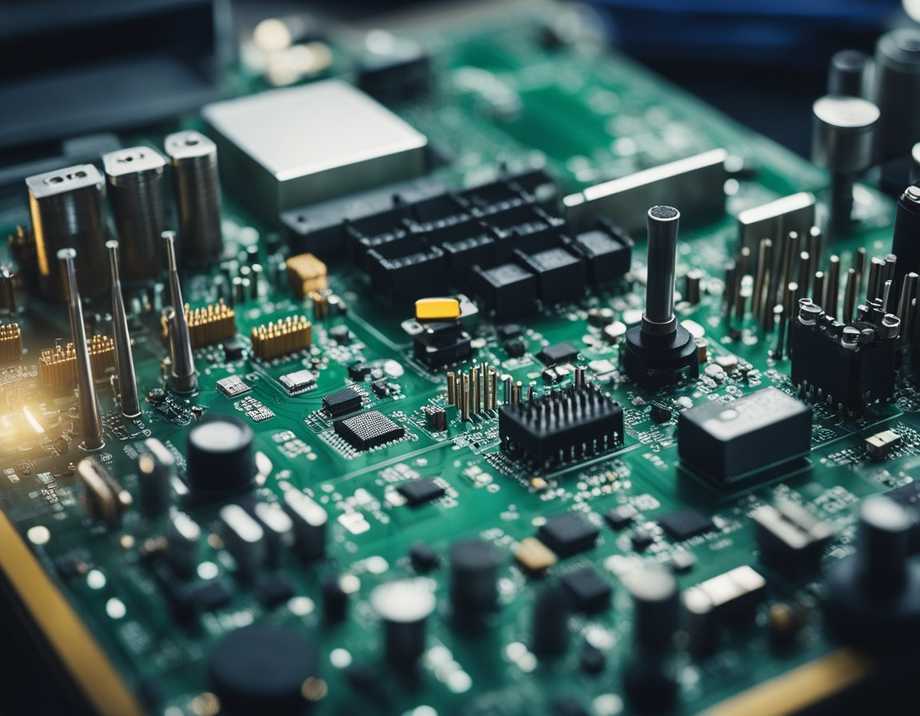Electronic design: basic principles for technological innovation
elettronica-industriale
Electronic design is an evolving field that encompasses the design of circuits and systems that find applications in countless areas of modern technology. From the basics of electronics, which include an understanding of components and operating principles, to the creation of circuit board layouts, every aspect is carefully considered to develop innovative solutions. It also involves the development of software and firmware that are essential for the proper functioning of electronic devices.
The success of an electronic design project goes through various verification and simulation steps that ensure the reliability and performance of the final product. This process is critical not only during the design phase but also during the production and assembly of devices. Furthermore, the growing importance of electronics in mobile devices and the Internet of Things (IoT) requires designers to be versed in the latest technologies and market trends.
Understanding and adhering to current regulations and certifications is crucial to ensure that electronic products meet the required safety and quality standards. Companies in the industry, such as CTA Electronics, often distinguish themselves through their scientific and creative approach to tailor-made designs. As the horizon continues to expand, innovations and future trends promise to shape the future of electronic design.
Fundamentals of Electronics
Electronic design is based on a solid understanding of basic principles and of electronic components. Effective design begins with the application of these concepts.
Basic principles
The basic principles of electronics include an understanding of electric current, voltage and resistance. They are based on fundamental laws, such as Ohm's law, which states that current in a circuit is directly proportional to voltage and inversely proportional to resistance. Other principles include the concept of electrical power and circuit analysis techniques, such as the method of nodes and meshes, which are essential for composing and interpreting electronic circuits.
Essential Electronic Components
In electronic design, a variety of components are used. Below are some of the key components:
- Resistors (R): limit electric current and are defined in ohms (Ω).
- Capacitors (C): store electrical charge, measured in farads (F).
- Diodes: allow current to flow in only one direction, protecting circuits from possible damage caused by voltage reversals.
- Transistors: act as switches or amplifiers in the circuit, controlling large currents from small ones.
Beyond these elements, integrated circuits (ICs) and microcontrollers are often used to manage complex tasks within advanced electronic systems. The careful selection and use of these components are crucial in the design process to ensure the functionality and reliability of the final product.
Designing Electronic Boards
A table with electronic components, a computer, and a schematic drawing](./electronic-board-design.jpg 'A table with electronic components, a computer, and a schematic drawing')
Electronic board design is a critical process involving the creation of printed circuit boards and the development of detailed circuit diagrams. This process requires precision and methodical attention to detail to ensure that the circuits function correctly in the intended applications.
Printed Circuits (PCB)
Main parts of a PCB:
- Conductive layers: usually copper, where the paths connecting the electronic components are etched.
- Dielectric insulator: material, such as fibreglass, which separates the conductive layers.
- Metallic holes (vias): allow the electrical connection between the different layers of the PCB.
The design of a PCB involves selecting materials suitable for the required performance and optimising the space in which the components will be placed. Electromagnetic interference and thermal dissipation are taken into account. The compactness and configuration of the electrical paths are essential for the reliability of the circuit.
Circuit diagrams and layouts
Basic steps in creating circuit diagrams and layouts:
- Definition of requirements: understand the desired functionality and any limitations.
- Drawing the circuit diagram: graphic representation of components and their interconnections.
- Generation of PCB layout: transposing the schematic into a drawing that reflects the physical arrangement of the components on the board.
The PCB layout requires careful planning in order to position the components optimally and to minimise the length and complexity of the paths. This is followed by prototyping and rigorous testing to ensure that the hardware meets the technical specifications.
Software and Firmware Development
In electronic design, software and firmware development is the functional heart of the system, essential for the interaction and control of the hardware.
Desktop software
[Desktop software or software for PC](https://www.ctaelectronics.com/en/services/software-development/) is designed to interface with hardware devices and allow the user to control its functionality. These programmes can range from diagnostic software to industrial automation solutions, and often include a graphical user interface (GUI) to facilitate interaction.
Main functions:
- Diagnostics: Identifies and solves device problems.
- Control: Manages real-time hardware operations.
- Automation: Performs pre-programmed tasks, improving efficiency.
Development of apps for smartphones, interfaced with electronics
Interfaceable mobile apps extend the reach of traditional PC software, making the configuration, control and monitoring of electronic devices accessible from mobile devices. When developing apps for smartphones, special attention must be paid to compatibility with different operating systems and security in the sense of both data protection during transmission and remote management of an apparatus or machine.
Critical aspects to be considered:
- Compatibility: is operation guaranteed on iOS, on Android or via a web browser? Which operating system versions are supported?
- Security: is the sensitive data exchanged between the app and the electronic device adequately protected?
- Remote usage control: Have the functions available remotely been structured to ensure security in normal operation?
Firmware Programming
Firmware is the basic program that instructs the hardware on how to operate, often integrated directly into the electronic components. Its development requires extensive knowledge of the hardware platform and skills and experience in low-level programming.
Essential characteristics of firmware programming:
- Stability: It must operate reliably under all conditions.
- Optimization: It exploits hardware resources with maximum efficiency.
Simulation and Verification
Simulation and verification are crucial phases in electronic design, allowing engineers to test and refine circuits before project delivery and/or the start of production.
Testing and Prototyping
During the Testing and Prototyping phase, critical experiments are conducted on prototypes to identify malfunctions and improve the product's robustness. Testing procedures are carried out following precise patterns aimed at covering all aspects of the device's operation:
- Functional tests: to verify individual functions.
- Stress tests: to assess the response under extreme usage conditions.
- Environmental tests: to ensure that prototypes withstand extreme temperatures or humidity.
This process is essential to ensure that the prototype meets all the specified requirements.
Simulation Tools
Simulation Tools play a fundamental role in anticipating circuit behaviors in various operational conditions before the physical realization of the prototype. Electronic simulation software allows:
- Timing verifications: to observe the circuit's temporal response.
- Thermal analysis: to study the impact of heat on electronic components.
- Signal simulation: to predict how signals will be processed in the circuit.
The data derived from these simulations are significant for refining electronic design and preventing future problems in the production phase or the life cycle of the designed electronic device.
Electronics in Mobile Devices and IoT
Modern electronics have evolved significantly with the advent of mobile devices and the Internet of Things (IoT), influencing communication methods. These developments have led to the creation of cutting-edge electronic products, with applications for smartphones or tablets that significantly enhance the user's interaction with the electronic ecosystem.
Telecommunications and Connectivity
Telecommunications are the backbone of IoT and mobile devices. Connectivity occurs through various communication protocols:
- Cellular: LTE, 5G.
- Local: Wi-Fi, Bluetooth, ZigBee, NFC.
The robustness and speed of telecommunications networks determine the effectiveness with which electronic products can interact and exchange data. Furthermore, advancements in telecommunications allow app developers and device manufacturers to offer superior performance and new features, increasing the utility and efficiency of products.
Although certain trends have more significantly influenced the consumer electronics sector, the industrial electronics field has also witnessed various changes following the inclusion of new communication technologies and interfaces.
Human-machine interfaces, for example, now aim to offer not only pure functionality but also an intuitive and visually pleasing user experience. Remote access to analytics and operational logs is becoming increasingly widespread in the industrial environment as well.
Standards and Certifications
In the field of electronic design, standards and certifications play a crucial role. They ensure the safety, quality, and compliance of products with international laws and specific industry directives.
Main standards:
- CE (European Conformity): Indicates the product's conformity with relevant European Union directives.
- FCC (Federal Communications Commission): Regulates communication standards in the United States, ensuring that electronic devices do not cause harmful interference.
- RoHS (Restriction of Hazardous Substances): A European directive that limits the use of hazardous substances in the manufacture of electrical and electronic equipment.
| Entity | Description |
|---|---|
| UL (Underwriters Laboratories) | A U.S. certification body that evaluates the safety of electronic components. |
| IEC (International Electrotechnical Commission) | Organizes international standards for all electrical, electronic, and related technologies. |
| ISO (International Organization for Standardization) | An entity that develops and publishes international standards for various sectors, including electronics. |
Certifications are essential for international trade, often influencing access to global markets. An electronic device that does not comply with the relevant regulations could be excluded from particular markets or sectors, such as the medical field.
Manufacturers and designers must therefore ensure that their products are rigorously tested and can undergo conformity testing to industry standards by the appropriate bodies. Compliance is in fact an ongoing process that requires attention to evolving legislation and collaboration with regulatory and certification entities.
Future Trends and Innovations
Electronics are heading towards a future dominated by innovations aimed at improving everyday life and industrial operations. The creativity of designers and the adoption of new technologies are the main drivers of this advancement.
Consumer Electronics
Consumer electronics will see an increase in device personalization, thanks to artificial intelligence (AI) and data processing at the nanoscale. Wearable devices will become more integrated with the human body, providing advanced monitoring and real-time interactions with other connected devices.
- User interface: Multimodal improvements will include voice, gesture, and even neural commands for more intuitive interactions.
Industrial Electronics
Industrial electronics will continue to transform radically with the implementation of Internet of Things (IoT) solutions for more efficient resource management and optimization of manufacturing processes. 5G networks and machine-to-machine (M2M) communication will make industrial plants more interconnected and responsive.
- Security and automation: The adoption of private networks and AI-based security systems will help protect critical infrastructures.
The careful use of these technologies will be crucial in shaping a future where consumer and industrial electronics increasingly efficiently meet the evolving needs of society and industry.
Would you like to receive special insights on industrial electronics?

